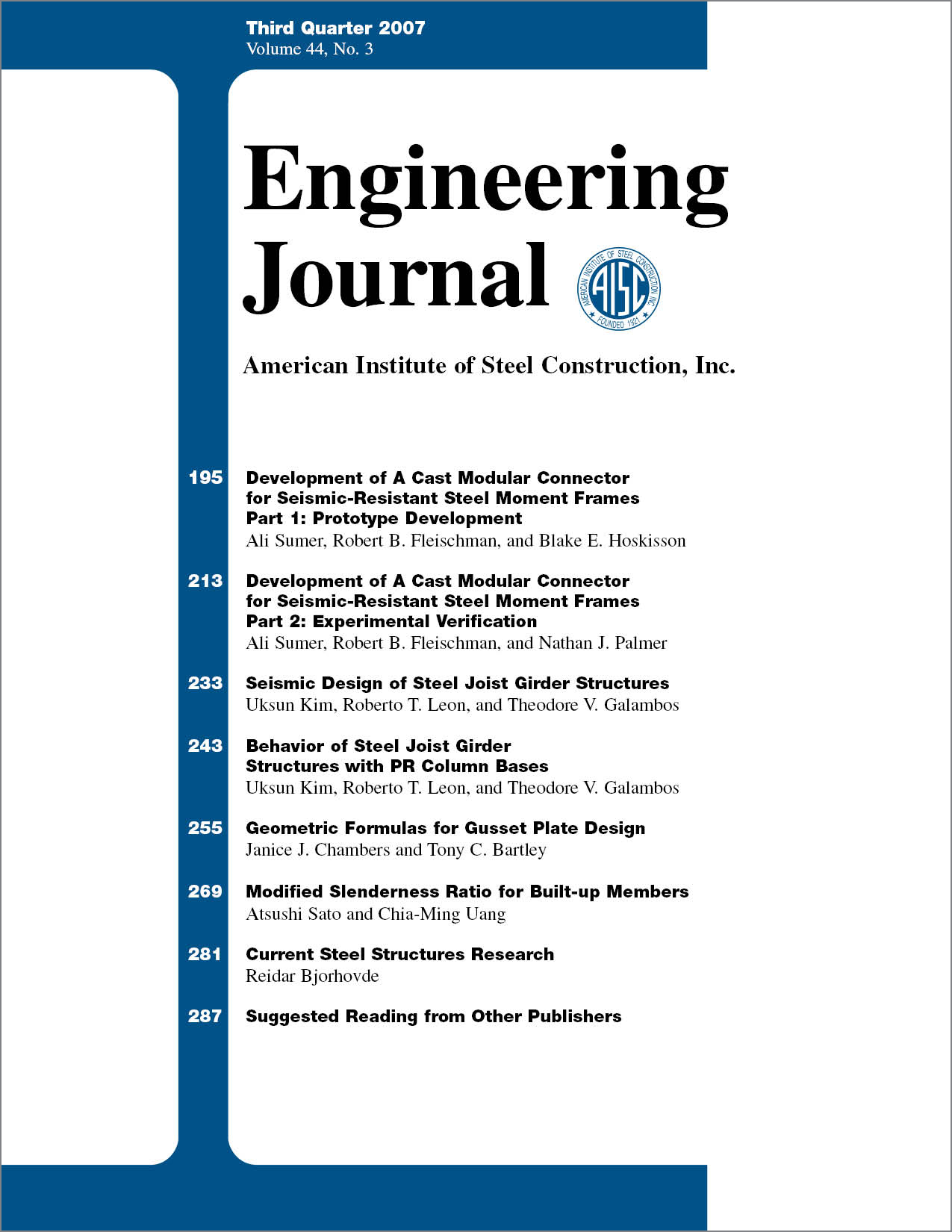Seismic Design of Steel Joist Girder Structures
DOI:
https://doi.org/10.62913/engj.v44i3.914Keywords:
Seismic design, connections-moment, structural and building systemsAbstract
Current seismic design provisions emphasize detailing that results in large system ductility and energy dissipation. This may not be the best approach for flexible structures that may be able to withstand large earthquakes in the elastic range or with very limited inelasticity. Among these types of structures are tall one-story frames often constructed utilizing joist girder systems. The main objective of this study is to provide a safe and efficient seismic design methodology for steel joist girder structures; typically one-story industrial or commercial structures intended primarily to carry light roof loads. A new design procedure based on the weak column—strong beam concept is developed and experimental and analytical verification studies are described. A full-scale cyclic test and pushover analyses show that the intended mechanism can be achieved if the required design strength of the joist girder members and connection to column are based on a column flexural strength of 1.2RyMpc. This design requirement is needed in order to avoid a buckling failure of the compression angle members of a joist girder and failure of connections at the end of the joist girder.

